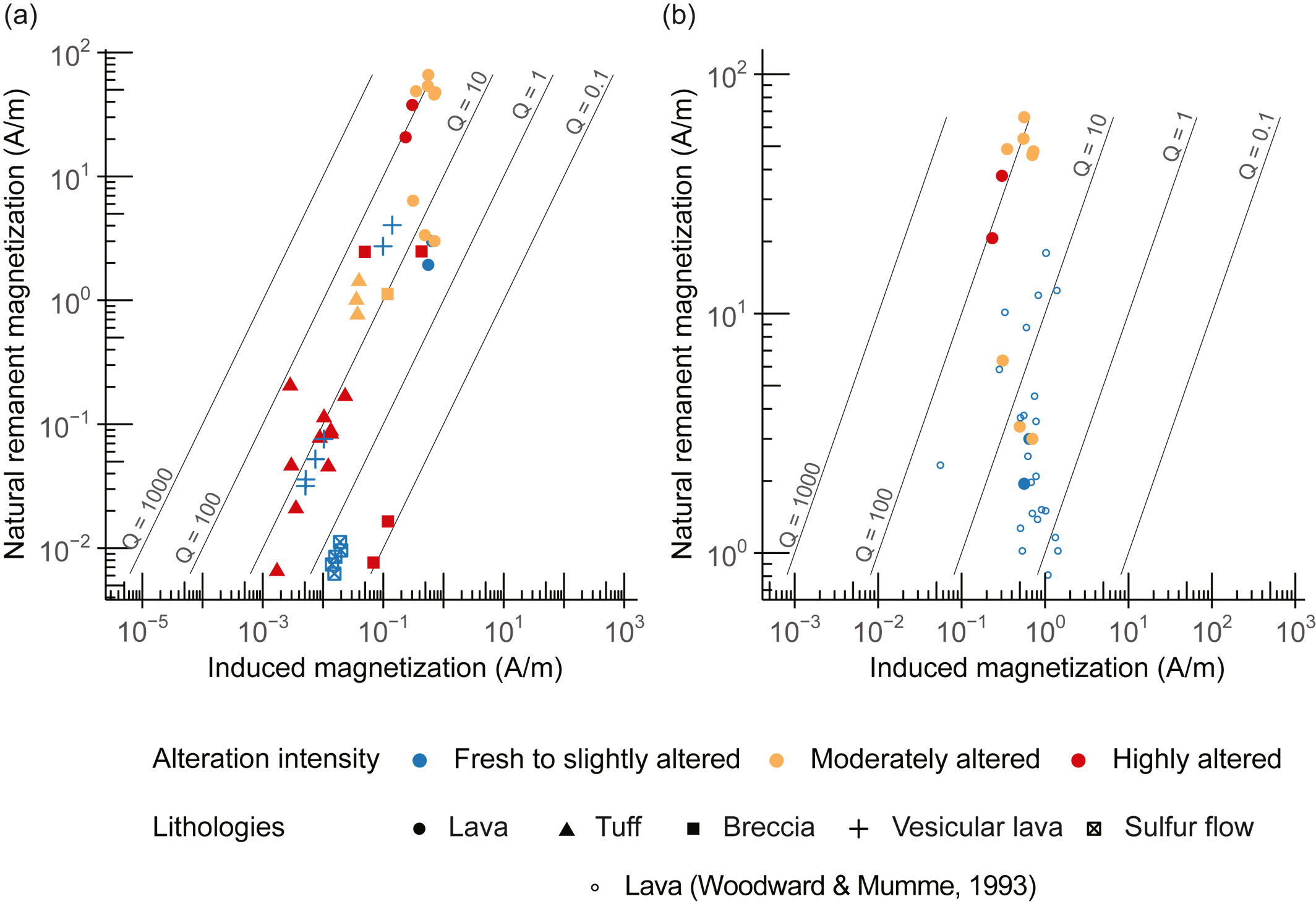
High remanent magnetization measured in hydrothermally altered lavas
Information
Geophysical Research Letters | 2021
Authors:
Shreya Kanakiya, Gillian M Turner, Michael C. Rowe, Ludmila Adam, Jan M. Lindsay
DOI: https://doi.org/10.1029/2021GL095732
Magnetic surveys are used to find regions in volcanoes where hot fluids alter the rocks and weaken them, locate ore bodies, and for geothermal exploration. These regions are expected to show low total magnetization on the surveys because the alteration process could consume iron-bearing magnetic minerals in these rocks. Here, we report a different observation from our laboratory experiments on rocks from Whakaari (White Island) volcano in New Zealand. The total magnetization of rocks is the sum of magnetization from (a) minerals that temporarily become magnetized when an external magnetic field is applied (induced magnetization) and (b) minerals that stay magnetized even without an external magnetic field (remanent magnetization). We find that sometimes altered rocks, despite low induced magnetization, can have higher remanent magnetization than fresh rocks. We discuss the potential causes for this. Given the importance of magnetic surveys in volcanic slope stability assessment and mineral and geothermal exploration, we suggest exercising caution in assuming that hydrothermally altered regions would necessarily be associated with low total magnetization.
Highlights
-
Natural remanent magnetization dominates induced magnetization in volcanic rocks from Whakaari.
-
Hydrothermally altered lavas can carry higher remanent magnetization than fresh lavas.
-
Both induced and remanent magnetizations should be used to interpret field-scale data.
Frequently Asked Questions
- Where can I find the samples used in this study?
-
The samples are at the Physics of Rock Lab at the University of Auckland.
- Where can I find the data from this study?
-
All data from this study are available in the online open-access repository - figshare. Citation: Kanakiya, S. (2021). Magnetic properties of hydrothermally altered rocks from Whakaari (White Island) volcano. https://doi.org/10.17608/k6.auckland.14614599